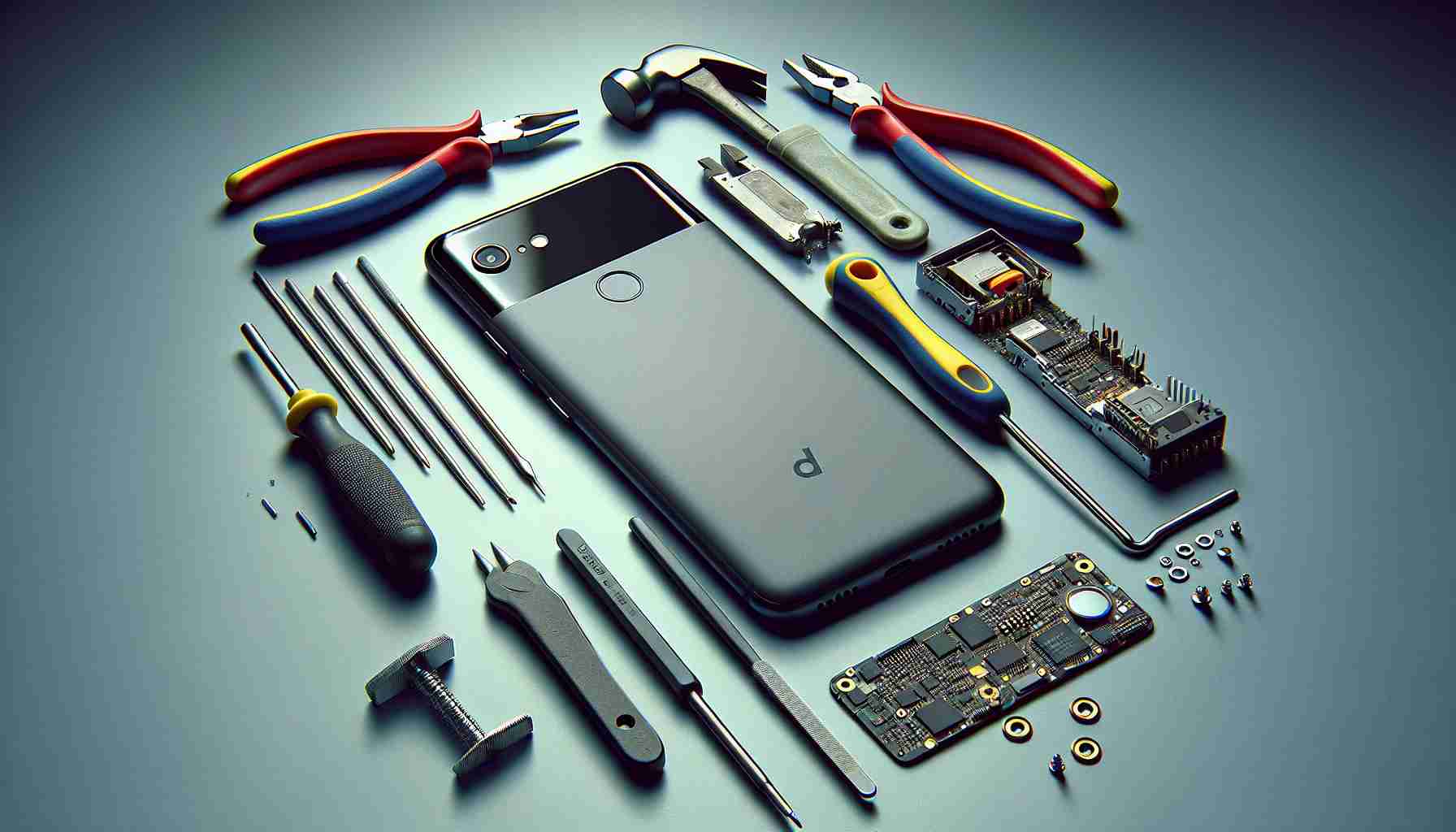Smartphones’ sleek design—a combination of glass and metal—makes them both an object of desire and vulnerability. A mere slip from your hands, and your treasured device could be lying on the floor with a cracked screen. In a move to empower users to fix their devices without seeking professional help, Google has teamed up with iFixit to facilitate DIY screen replacements and other repairs for their smartphones.
This initiative follows in the footsteps of Apple, which sparked the self-repair movement by offering official spare parts for their devices over two years ago. Samsung soon introduced a similar program, aiming to empower users to take charge of minor phone damages themselves. Coinciding with the launch of the Pixel 8 series, Google has also decided to provide replacement parts, with iFixit supplying the necessary components and tools.
At iFixit, you can acquire everything you need for smartphone repairs – for instance, a new display for the Pixel 8 Pro comes with adhesive strips and a comprehensive toolset starting at 235 Euros. A fresh camera module equipped with three sensors costs about 200 Euros, and users can get a new battery for approximately 43 Euros.
Despite improved conditions for self-repairs, a minority of Pixel owners are using this service. The reasons are manifold; specialized tools might need to be purchased, and many users lack experience in swapping components, leading to reluctance. To aid with these challenges, iFixit offers detailed guides on the disassembly and reassembly of devices.
Google’s ambition doesn’t stop there. They aim to design smartphones that can be repaired using common household tools. This includes the use of standard screws and minimizing the use of adhesives and complex connectors—a vision tracked internally through a “Design for Serviceability Scorecard.”
However, the prevalent use of adhesives, while a barrier to repairability, also plays a crucial role in protecting the device from water and dust. To balance between durability and serviceability, Google is working on reducing the amount of adhesive, especially in frequently replaced parts, while also providing suitable adhesive strips to maintain the Pixel phones’ resistance to environmental factors.
Key Questions and Answers:
1. What is the significance of Google’s partnership with iFixit?
Google is responding to a consumer push towards sustainability and the right to repair movement by partnering with iFixit to offer official Pixel phone parts and repair tools for DIY fixes. This empowers consumers to extend the lifespan of their devices by performing their own repairs.
2. How does this initiative compare to those of Google’s competitors?
Google is following the lead of Apple and Samsung, who have each launched their own self-repair programs. This competitive response indicates a broader industry shift towards giving consumers more control over their devices’ maintenance.
3. What challenges do users face in repairing their own devices?
Despite the availability of parts and tools, many users may still find it challenging to conduct repairs due to a lack of technical skills, the need for specialized tools, and fear of damaging their devices further.
4. What are the potential controversies associated with the DIY repair program?
One controversy is the balance between a phone’s build quality and repairability. While the program promotes repairs, it may also raise questions about product durability and whether easier repairability might compromise the device’s structural integrity.
5. What are the advantages and disadvantages of such a program?
Advantages:
– Environmental Sustainability: By facilitating repairs, this initiative can reduce electronic waste and promote a more sustainable lifecycle for smartphones.
– Cost Savings: DIY repairs can potentially be cheaper than professional services or replacing the phone entirely.
– Consumer Empowerment: It gives users more autonomy over their devices and can be satisfying for those who are adept at repairs.
Disadvantages:
– Complexity of Repairs: Repairing the latest tech can be complex and daunting for individuals without the proper expertise.
– Potential for Damage: Incorrect repairs can lead to further damage or voiding of warranties.
– Tools and Parts Cost: Some customers might not want to purchase specific tools for a one-time repair.
Related Links:
For official replacement parts and tools for Google Pixel phones, you can visit iFixit’s website: IFixIt.
For information on Google’s sustainability and product repairability efforts: Google.
To compare with Apple’s self-repair initiative: Apple.
To look into Samsung’s take on self-repairs: Samsung.
